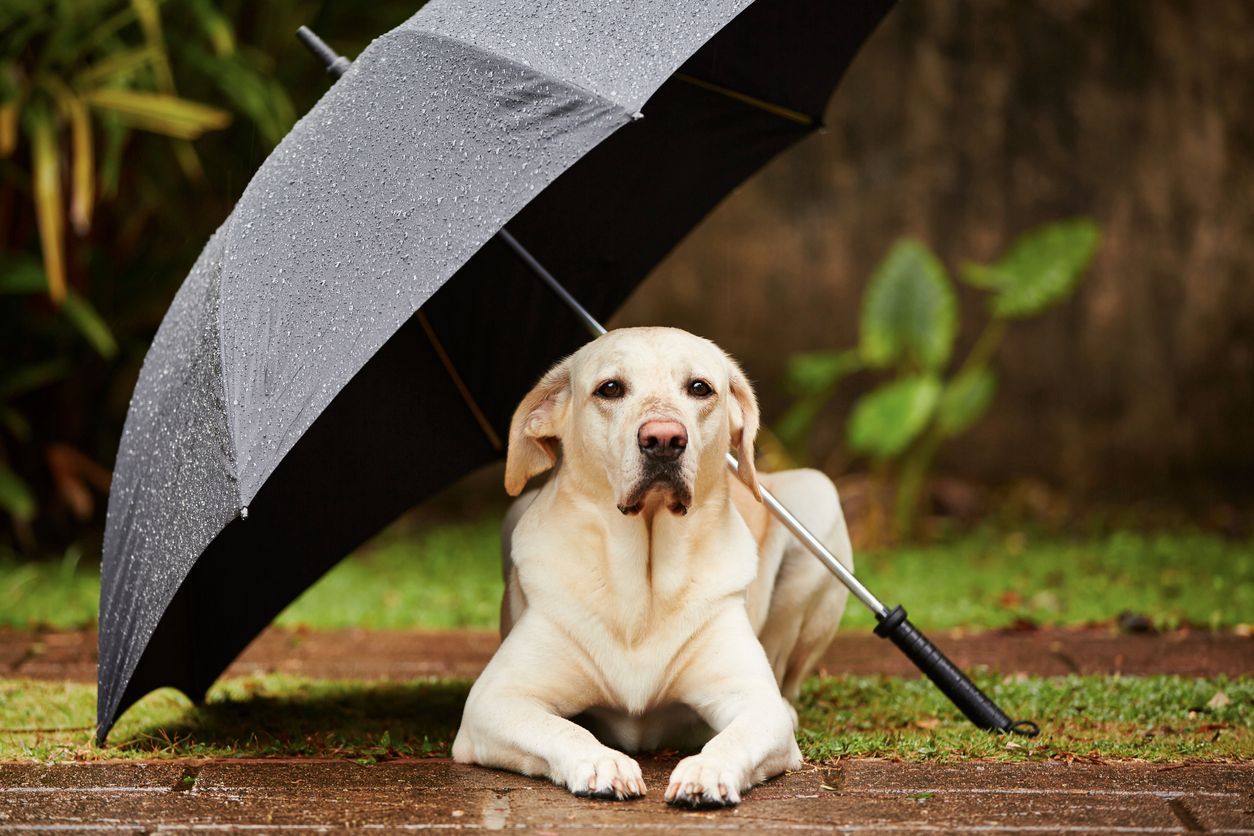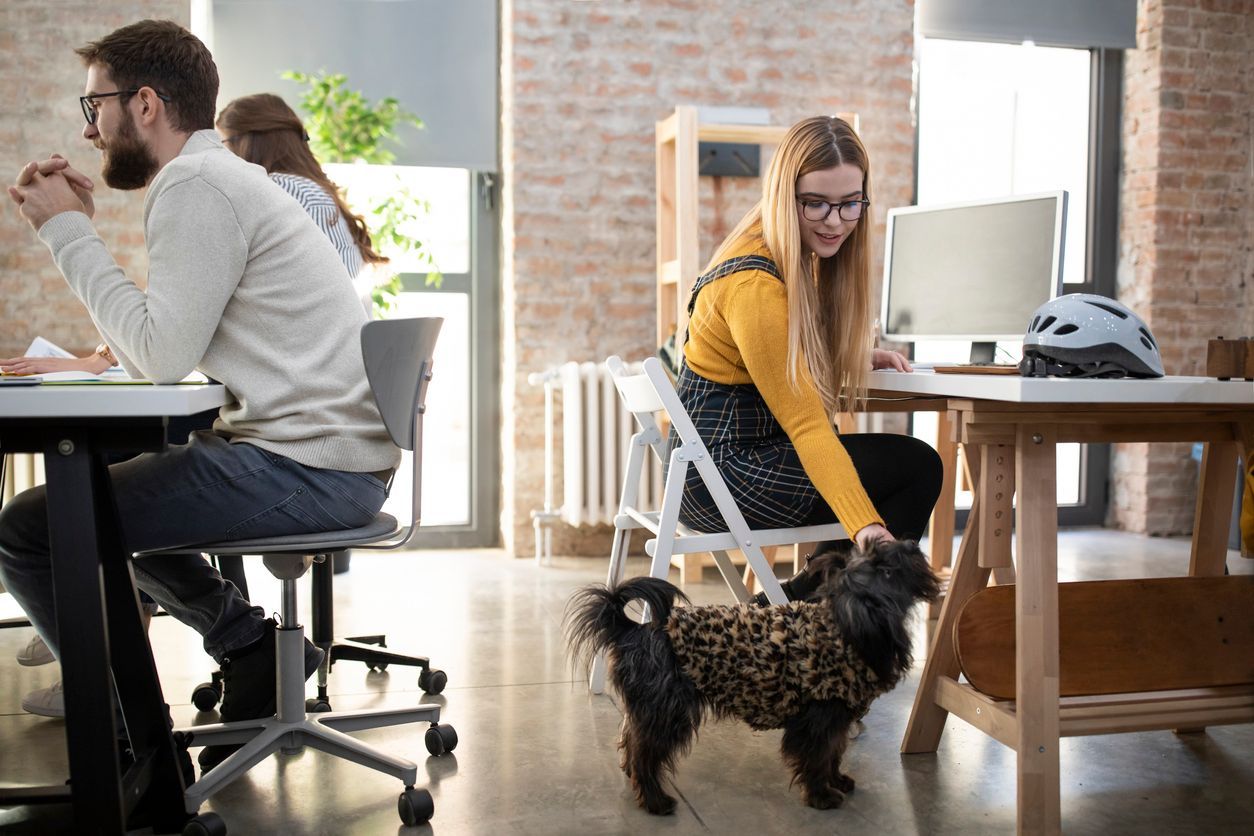Pet shedding more than ever? Yep, it’s spring

Shedding is a common complaint among dog and cat owners as fur covers our clothes, furniture, and home, though shedding is also a healthy and natural process. However, springtime can bring excessive shedding that can be difficult to manage. Read on if you’ve asked:
- Is shedding normal for dogs and cats?
- Can I prevent my pet from shedding?
- What grooming tools should I have for my pet?
- Can illness cause shedding?
Seasonal shedding is an annoying part of pet ownership for many. Although there isn’t much to be done about shedding itself, it is important for pet parents to learn how to maintain their pet’s coats and recognize when hair loss is abnormal.
Why do dogs and cats shed?
Shedding is a natural process for dogs and cats. The shedding process replaces dead hair with healthy, new hair and changes your pet’s coat as the weather warms and cools. Not all dogs and cats shed the same, however. Different breeds shed to varying degrees and at different times of year. Some breeds shed the same amount throughout the year, while others shed heavily twice a year as the shifting seasons trigger a change in coat thickness. A dog experiencing heavy shedding in the spring as they release their thick winter undercoat is said to be “blowing its coat.”
Can I prevent my pet from shedding?
Shedding is a healthy and natural process for nearly all dogs and cats, even those considered hypoallergenic. Hairless breeds also regularly shed the few hairs they have. While pet parents cannot keep their furry friends from shedding, they can help keep the shedding manageable and minimize the mess.
Regular brushing and grooming help remove dead and loose hair from the coat before it can fall out. Keeping up with this routine is the easiest way to maintain a healthy coat, minimize shedding, and keep your pet looking its best. Many dogs, including those who do not shed heavily, may benefit from regular brushing at home to prevent mats and tangles and keep the skin moisturized and healthy.
What breeds shed the most?
There are two types of coats in dogs and cats: single and double coats. All breeds have a top coat, but double-coated breeds also have a wooly undercoat. These undercoats shed seasonally to maintain body temperature during hot and cold weather, depending on the season. Due to this, double-coated breeds, such as Huskies, German Shepherds, Maine Coons, Labrador Retrievers, and Pomeranians, shed more than their single-coated friends.
What is the best brush for my pet’s coat type?
Single coats, double coats, long hair, and short hair have different needs when choosing the right brush. For short-haired dogs, such as Pugs and French Bulldogs, a bristle brush helps loosen and brush away dead hair and exfoliate the skin. Dogs and cats with long, single coats do best with combs and detanglers that help keep the fur smooth and tangle-free. Double-coated breeds that excessively shed may benefit from slicker brushes, coat rakes, and other shedding tools that grab the loose undercoat and comb through the outer coat. A professional groomer will have all the necessary tools and advice to best groom your pet.
Should I get my pet professionally groomed?
Professional pet groomers are an excellent resource for healthy skin and coat maintenance in pets, especially in shedding season. Don’t overlook their role in coat maintenance and pet health. Like different brushes, different coat types require specific grooming and maintenance. A grooming professional can help:
- Choose the proper cut
- Trim around the face, genitals, and paw pads
- Trim nails
- Shampoo and clean the fur
- Brush the teeth
Not every pet needs a groomer. Consider consulting with a professional if you feel overwhelmed with your pet’s excessive shedding or uncomfortable cutting nails or trimming around sensitive areas.
Can shedding be a sign of illness?
While most shedding is healthy, hair loss and abnormal shedding can indicate an underlying health condition. Normal shedding does not leave bald patches or thin-haired areas. In addition, healthy skin does not have a foul odor, sores, or crustiness. Conditions that can cause hair loss include:
- Fungal infections
- Skin allergies
- Mange, fleas, or other external parasites
- Injury to the skin
- Extreme stress
- Malnutrition or poor diet
- Endocrine disorders
- Cancer
- Various congenital skin conditions
If you suspect your pet’s shedding is abnormal, consult a veterinarian. A vet will perform a physical examination and may recommend diagnostic tests, such as skin scrapes and blood work, to figure out why a pet is losing fur.
How can I minimize excess shedding?
To minimize excess and seasonal shedding, brush your pet’s coat regularly with an appropriate brush and consider consulting with a professional groomer. Your pet’s grooming routine may change or increase in the spring and fall if they shed seasonally. "If you have a healthy pet and want to ensure you're doing all you can to minimize shedding, start by ensuring you're keeping up with deworming and flea control and consider adding an appropriately formulated omega-3 fatty acid supplement,” suggests Dr. Jo Myers, a Vetster veterinarian.
If your pet is shedding or losing hair abnormally, consult a veterinarian to rule out underlying medical conditions. If you want to discuss your pet’s coat health with a veterinarian, a virtual vet appointment is an excellent way to quickly answer your questions and concerns.
FAQ - Is your pet shedding excessively? Yep, it’s spring.
Which breeds are heavy shedders?
While every dog and cat breed with fur sheds, those with double coats shed more as their body prepares for hot or cold weather. The wooly undercoat sheds and is replaced with the proper insulation to protect them from heat and frigid temperatures. Heavy shedding breeds usually originate from northern climates with harsher winters, and some examples include Huskies, Bichon Frise, Pomeranians, Norwegian Forest Cats, and Maine Coons.
How long does seasonal shedding last?
Seasonal shedding in dogs and cats can last up to two months as they shed their winter or summer coats. Regular brushing and visiting a professional grooming service can help minimize excessive shedding around the home and keep it manageable.
How do I know if my pet is shedding too much?
Some pets shed more than others and can be perfectly healthy. However, normal shedding does not leave bald spots, areas with thin hair, or inflamed, crusty skin. If your pet is experiencing hair loss or thinning, consult a veterinarian.
What can I do to keep my pet’s coat healthy?
Regular brushing and grooming prevents matts and tangles, removes dead hair, and helps distribute healthy oils to maintain coat health. Consider visiting a grooming professional to help maintain coats, pick the right cut for your pet’s type of coat, trim around sensitive areas, and thoroughly wash the skin and fur.




